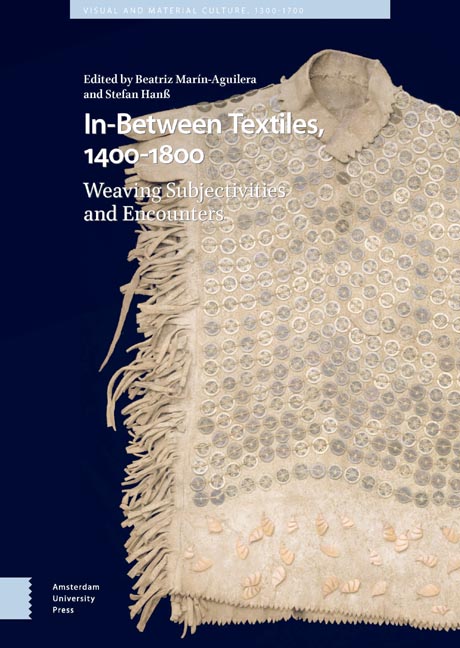Book contents
- Frontmatter
- Dedication
- Miscellaneous Frontmatter
- Table of Contents
- List of Illustrations
- Acknowledgements
- 1 Subjectivities In-Between Early Modern Global Textiles
- Part I Unhomeliness, Mimicry, and Mockery
- Part II The Material Enunciation of Difference
- Part III Identity Effects In-Between the Local and the Global
- Part IV Material Translation and Cultural Appropriation
- Archives, Libraries, and Museums (Abbreviations)
- Select Bibliography
- Index
16 - Cochineal and the Changing Patterns of Consumption of Red Dyes in Early Modern European Textile Industries
Published online by Cambridge University Press: 14 October 2023
- Frontmatter
- Dedication
- Miscellaneous Frontmatter
- Table of Contents
- List of Illustrations
- Acknowledgements
- 1 Subjectivities In-Between Early Modern Global Textiles
- Part I Unhomeliness, Mimicry, and Mockery
- Part II The Material Enunciation of Difference
- Part III Identity Effects In-Between the Local and the Global
- Part IV Material Translation and Cultural Appropriation
- Archives, Libraries, and Museums (Abbreviations)
- Select Bibliography
- Index
Summary
Abstract
This chapter presents the results of a decade-long study on the appropriation of American cochineal in early modern European textile industries. The comparative study is based on in-depth archival research and a new scientific approach that allows, for the first time, the accurate distinction of insect dyes in historical textiles. Revealing the gradual adoption of New World dyestuff, the chapter shifts established narratives and calls for attention to the very material composition of in-between textiles. Actual matter inhabited these fabrics’ Third Space, whose material composition changed in response to early modern colonialism and consumerism.
Keywords: cochineal; insect dyes; natural dyestuffs; scientific analysis; Third Space
Tracing American Cochineal: An Interdisciplinary Approach
In 1520, Charles V, Holy Roman Emperor and Archduke of Austria, King of Spain and Lord of the Netherlands (r.1519–1556), received in Tordesillas two representatives from the expedition of Hernán Cortés (1485–1547) in Mexico. Besides news of their first landing in the territory, they brought a plentiful of presents, many of them offered one year before to Cortés by the Aztec Emperor Moctezuma II (r.1502–1520). It is impossible to tell if bags of cochineal were among these first “New World” presents to the Spanish Court, but this could have been present as a red pigment colouring some of the offerings, such as cotton cloths, featherwork, or codices. Cochineal was certainly noted by the expedition of Cortés in Mexico City one year before, and shortly after the conquest of the city in 1521, the Emperor himself ordered Cortés and other royal officials in Mexico to ship insects to Spain, as well as information about their potential use for dyeing, local exploit, and trade. Charles was undoubtedly right about the prospects of the Mexican insect, for no more than one century later, cochineal would become one of the most lucrative American revenues for the Spanish Crown.
Dactylopius coccus COSTA, also known as American cochineal, breeds on the surface of prickly pear cactuses endemic to Central and South America, and it appears to be the product of centuries of selective breeding by pre-Colombian Mexican people. In colonial Mexico, its production was entirely in the hands of the indigenous people.
- Type
- Chapter
- Information
- In-Between Textiles, 1400-1800Weaving Subjectivities and Encounters, pp. 347 - 368Publisher: Amsterdam University PressPrint publication year: 2023



